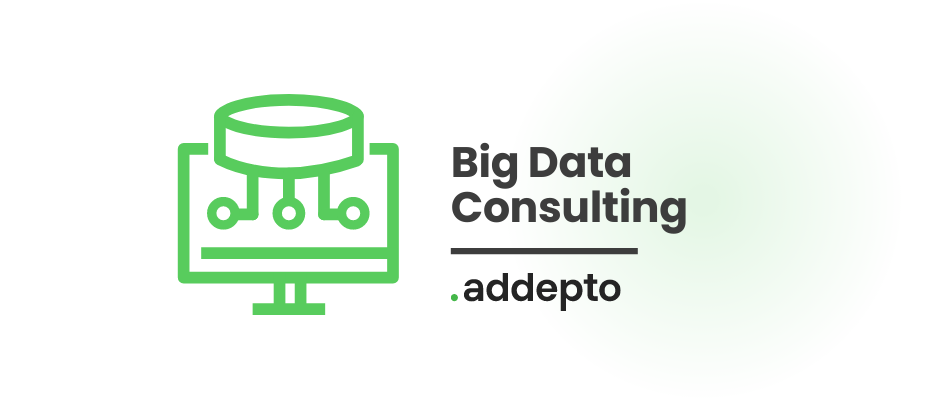
February 26, 2024
Big Data Implementation: Roadmap, Challenges and Benefits
Author:

CSO & Co-Founder
Reading time:
9 minutes
Big Data and data lake are pretty popular terms nowadays. And even though its big data definition is simple enough, it hides numerous potential advantages for your company. But what are those advantages, and what does big data implementation look like? As always, we will answer all these and many other questions. Just keep reading!
Big Data: definition and types
Before talking about complicated projects, let’s start with a definition of big data. As we already told you, it is simple. Big Data is a very large and diverse set of information which is constantly growing. Big data can be both structured and unstructured. When structured, big data is organized in databases and data warehouses. Unstructured data can be defined as raw information collected by a company to understand the needs of its customers. It has no format or model to follow.
Big Data can be gathered from shared comments on websites and social networks, questionnaires, personal electronics, IoT and so one. There are a lot of potential sources of information.
Big Data Analytics implementation strategy
Big Data can become one of your company’s most valuable resources. However, it won’t be able to play its role unless it is identified, gathered, managed and analyzed. To deal with this challenge, you need a reliable analytics strategy.
Here are a few recommendations on developing such strategy:
Focus on customer-centric outcomes
Reaching success is impossible when your customers are unhappy. So when starting working on your strategy, prioritize customer-centric outcomes. These mean providing better services and increasing the customer retention rate.
Keep the entire company in mind
Your analytics strategy shouldn’t cover a single department of your company — it should be suitable for the entire enterprise. A strategy must fit the vision of the company and its already existing strategy.
Start with the data which is already available
Before collecting the data, start with the information you already have. It may provide you only with short-term results, but this is still a wise decision. You will save some time and funds, and learn how to work with loads of data.
Invest in tools and skills for big data implementation
The number of analytics tools is constantly growing. Therefore, to create a strategy and implement a project, you will have to choose the most suitable one. Don’t be afraid to invest money in them — reliable tools are definitely worth the expenses. Besides, make sure that your data scientists know how to use the chosen tools and invest in their education if needed.

Learn more about Big Data Consulting Services
The roadmap of the analytical Big Data implementation process
To implement your Big Data project, follow our roadmap. It is not ultimate, but it includes the most crucial steps you should take.
Take a closer look:
1. Find a team and a sponsor
If you already have a dedicated team that can deal with the project, that’s great. If no, start with looking for experts. Besides, you may also need a sponsor. Big data projects take a lot of time and effort, which can go beyond your budget. So, calculate your potential expenses and decide if you need sponsorship or not.
2. Identify data sources
As we already told you, it is okay to start with already existing data. However, you will still have to identify additional data sources you can use to collect the data. Identify, prioritize and evaluate them during this stage.
By the way, the data can be kept in so-called data lakes. A data lake is a repository for storing both structured and unstructured data. Unlike a data warehouse, a lake implies a flat architecture for storing the data. Besides, you can build and deploy data lakes using cloud infrastructure or on-premises infrastructure.

Read more about Big Data vs. Data Warehouse: Key Differences

3. Connect data sources to your clients
After you are done with deciding on data sources, connect them to the needs of your clients. Let’s say, if you are leading the retail chain, you can collect the data with the help of digital coupons. A customer gets a coupon for a discount and is happy to visit your place. In turn, you also get what you want.
4. Incorporate new data hubs
Now, incorporate new data hubs one by one. Don’t hurry; this process should be gradual. In this way, you will have enough time to adjust your operations and understand how to use the data. If you try to do everything at once, your project can simply fail, so let things be incremental.
5. Connect the clients’ data to your company’s processes
Every data set you gather provides you with an opportunity to improve your services or products. Therefore, data-driven decisions should be present at the company at all levels: product development, pricing, marketing, etc.
6. Don’t forget about testing
Test, measure and learn — that’s one of the most important things in the analytical process. When collecting another data set, test the related assumptions to understand how to move forward.
And one more tip here. To simplify working with the data and the Big Bata project implementation, use Big Data visualization tools and techniques. They will provide you with a better understanding of large volumes of data, so the results will be more efficient.
Important questions to answer before Big Data implementation
Big Data always means loads of information, so when you realize the volume of the information gathered, you will have to answer the following questions:
- Which data is relevant and suitable for the project?
- Which data doesn’t meet the relevance requirements?
- Is the data at rest? Just in case, data at rest is inactive data stored in any digital form.
- Is the data in motion? In turn, data in motion is data moving through the network.
- How can the data help you to achieve your goals? How can it serve you?
Answering all these questions will help you to shape your project and maybe even save some funds.
Develop the Big Data platform that works for you
A big data platform is a solution combining the capabilities of several utilities and tools for managing and analyzing the data. With a platform, you won’t have to use a lot of applications or tools — it will work as a packaged solution.
However, there is no universal platform to work with every single data set. You will have to develop a new one that will use the most effective tools for analyzing the data. Apart from this, your platform must fit your company’s strengths.

Read more: Introduction to Big Data Platforms

Benefits of Big Data implementation
You may think that working with loads of data is complicated, time-consuming and costly, but, actually, the benefits are worth the effort. The thing is that the implementation of the chosen Big Data solution will provide you with an opportunity to make your business more successful and profitable.
- First of all, you will get a much better understanding of your customers’ needs.
- Then, this knowledge will allow you to tailor your products or services.
- And, finally, you will be able to improve your marketing strategy.
All these factors lead to an increasing number of clients, better retention rates and higher profits. And we guess these are exactly what you are in search of, right?
Big Data Solutions FAQ
- What is Big Data?
Big Data refers to a very large and diverse set of information that is constantly growing, encompassing both structured and unstructured data. Structured data is organized in databases and data warehouses, while unstructured data includes raw information collected to understand customer needs without a specific format or model.
- What are the advantages of Big Data solutions?
Implementing Big Data solutions can provide numerous benefits, including a deeper understanding of customer needs, tailored products or services, improved marketing strategies, increased customer retention, and higher profits.
- What steps are involved in the implementation of the Big Data solution?
The implementation of Big Data solution includes finding a team and a sponsor, identifying data sources, connecting data sources to client needs, incorporating new data hubs, connecting client data to company processes, and continuous testing and learning.
- What should be considered before Big Data implementation?
Before implementing a chosen Big Data solution, it’s important to determine which data is relevant, distinguish between data at rest and data in motion, and understand how the data can help achieve company goals.
- What is the difference between Big Data solutions and traditional data solutions?
The main difference lies in the volume, velocity, and variety of the data processed. Big Data solutions are designed to handle vast amounts of unstructured and structured data from diverse sources in real-time or near-real-time, whereas traditional data solutions are typically suited for smaller volumes of structured data with longer processing times.
- What is a data lake in the context of Big Data solutions?
A data lake, as a critical component of Big Data solutions, is a scalable and flexible repository that stores a vast amount of structured and unstructured data in its native format. Data lakes can be implemented on cloud platforms or on-premises, depending on the specific requirements and capabilities of the organization, offering a foundational element for Big Data solutions that aim to harness the full potential of their data assets.
- What is a data warehouse in the context of Big Data solutions?
In the context of Big Data solutions, a data warehouse is a centralized repository designed for storing, managing, and analyzing large volumes of structured data from various sources. Unlike data lakes, which accommodate raw, unstructured data, data warehouses are organized and optimized for querying.
Conclusion
Logically, Big Data is a pretty broad topic. We told you a lot, but you may still have some extra questions. So, would you like to ask something about data engineering services? Or probably, you want to know something about machine learning for finance and AI on top of the Big Data?
In any case, you are welcome to get in touch with us and ask all your questions.
This article is an updated version of our previous publication from 11.11.2020.
Category:





